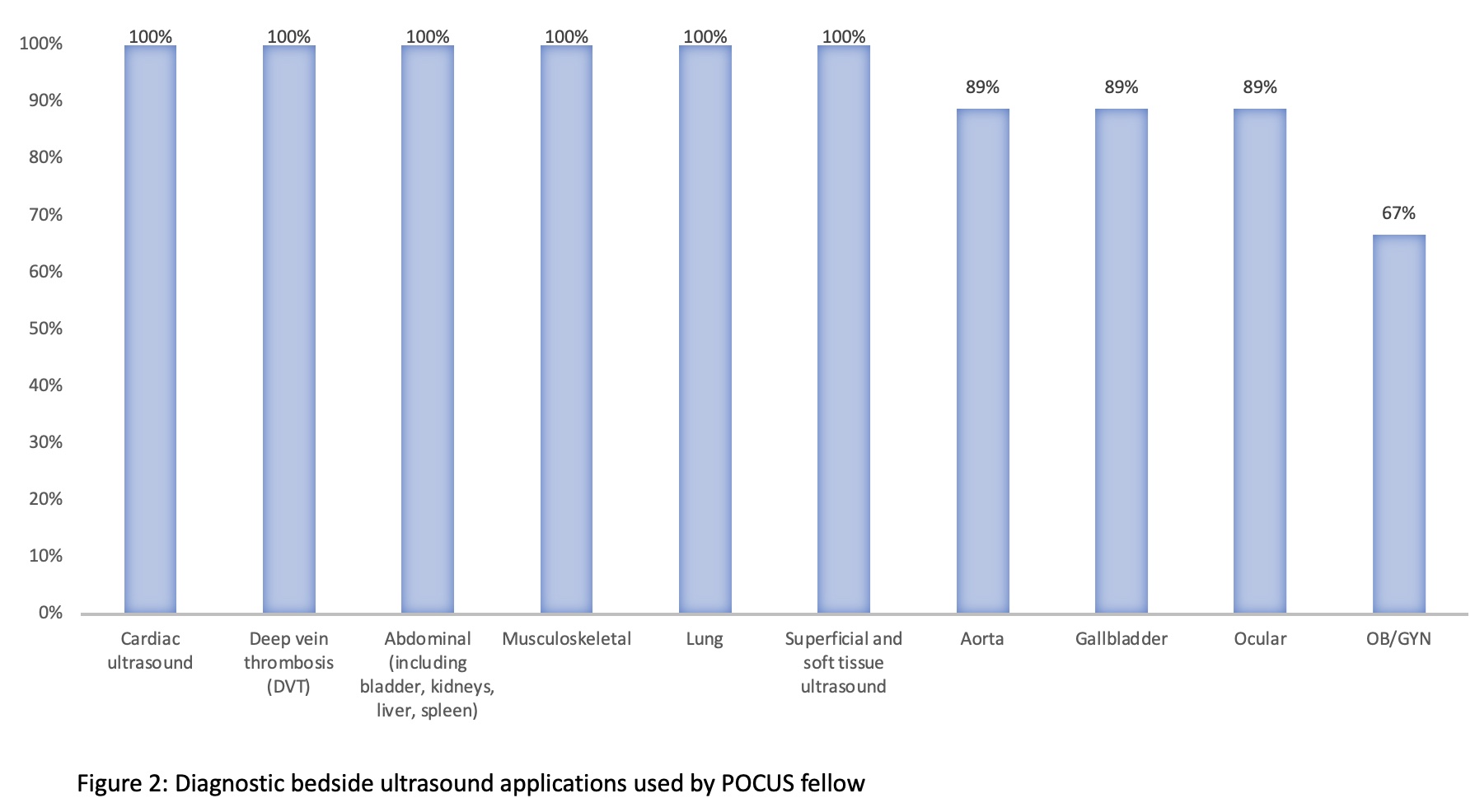Background: Point-of-care ultrasound (POCUS) is a goal-directed ultrasound exam performed by a healthcare provider to answer a specific question or guide performance of an invasive procedure at the bedside. The Alliance for Academic Internal Medicine (AAIM) and the American College of Physicians (ACP) support the integration of POCUS into graduate medical education (GME).Emergency medicine (EM) adopted POCUS into its practice decades before internal medicine (IM). As a result, there are well-established educational curricula in GME, including within EM residencies and fellowships. There are currently over 100 EM POCUS fellowships within the United States with defined objectives and requirements. In contrast, there are few IM POCUS fellowships, with a variety of objectives and requirements. There is scant literature summarizing these fellowships. This information is important as we work to expand POCUS education within GME and can serve as a guide for future programs.Our objective was to conduct a survey of IM POCUS fellowships throughout the US and Canada regarding the current state of education and training.
Methods: We conducted a survey of IM POCUS fellowship programs in the US and Canada. The survey consisted of 30 questions focusing on general fellowship design, requirements, and information about POCUS use at the institution. Question types included multiple-choice, matrix, ranking, checkboxes, and free-text boxes.
Results: Of 11 IM POCUS fellowships identified, 9 completed the survey (response rate 82%). There are many similarities among IM POCUS fellowships (Table 1). While most educators in these programs are IM physicians, there is a range of other instructors who assist in the education of fellows. Few programs require fellows to complete a national POCUS certification process and few provide funding for this process.There is a strong consensus on the diagnostic ultrasound exams utilized (Figure 1). For portfolio development, cardiac, abdominal, and lung ultrasound exams were most emphasized.Procedural ultrasound was a major focus, with 6 procedures (peripheral and central vascular access, joint aspiration, paracentesis, thoracentesis, and lumbar punctures) most utilized. Teaching was emphasized across programs, with 100% reporting their fellows are responsible for teaching residents. Most also teach medical and APP students, other fellows, and faculty members, and are involved in the creation of educational materials. Research was not as highly emphasized, with only 56% of programs having a mandatory research requirement for their fellows.The major barriers to creating a POCUS fellowship were similar to those reported in the literature, namely the lack of trained faculty and POCUS “champions” and lack of financial support for faculty time.
Conclusions: In conclusion, we surveyed 11 IM-focused POCUS fellowship programs within the US and Canada and summarized the structure, educational strategies, requirements, and competencies used to train and evaluate POCUS fellows. Our hope is that institutions looking to create fellowships can use this information as a basis for developing a program. The major domains emphasized by programs included diagnostic POCUS, procedural POCUS, and POCUS education, with somewhat less of an emphasis on mandatory POCUS research. As demand for POCUS throughout every level of medical education continues to grow, it will be important to also increase the availability of these fellowship positions to train leaders in ultrasound education.


